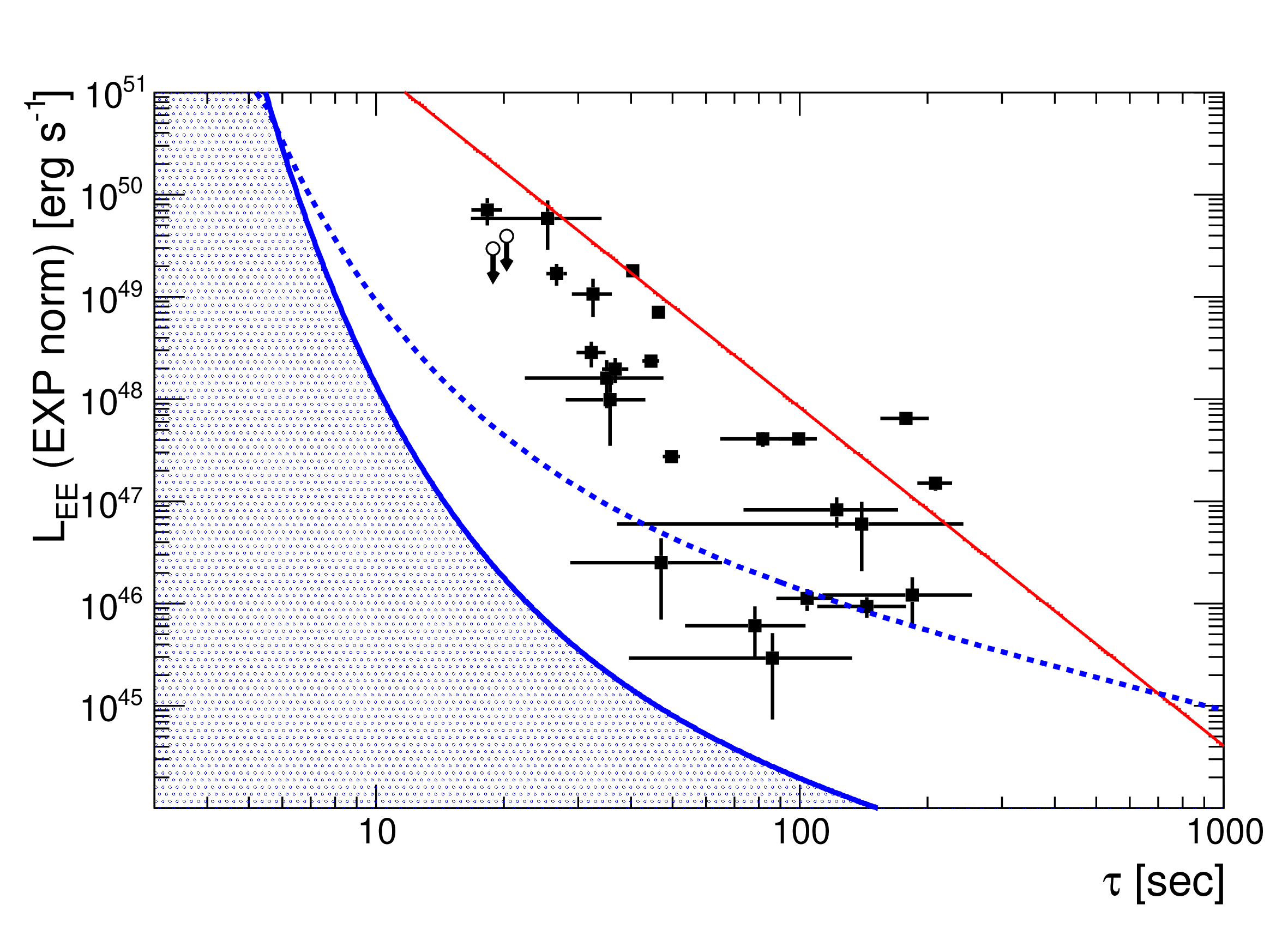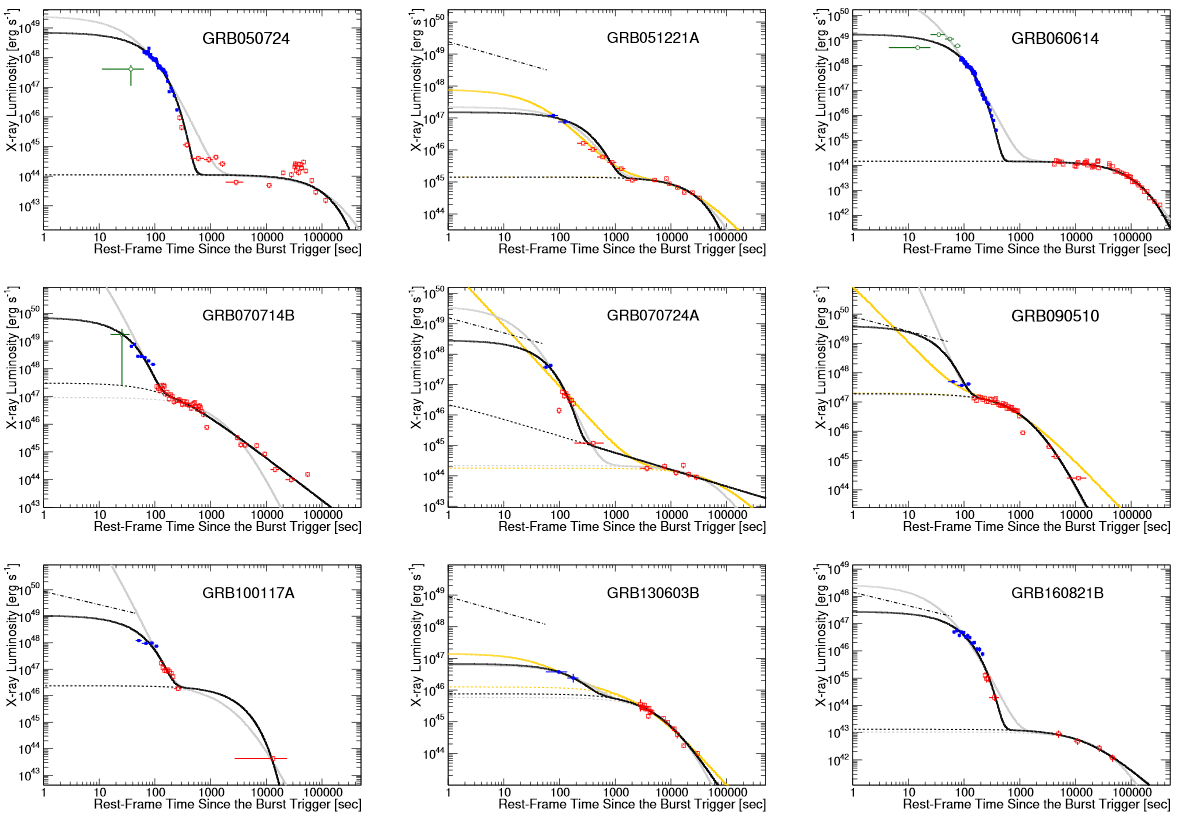Abstract:
A research team at Kanazawa University has discovered the characteristic temporal behavior in extended X-ray emission of short gamma-ray burst phenomena which might produce gravitational waves. This work shows how scientists can combine information of both electro-magnetic and gravitational waves for deep understanding of newly born black holes.
Kanazawa, Japan – A research team led by Kanazawa University has shown the universal behavior of decaying extended X-ray emission of short gamma-ray bursts which might be associated with coalescence of binary neutron stars, i.e. gravitational wave sources. This work has important consequences for the future of gravitational wave astronomy in view of collaborative observation between conventional electromagnetic wave and brand-new gravitational wave.
The announcement that gravitational waves, which are ripples in spacetime that travel in all directions at the speed of light, can be detected on Earth created excitement throughout the astrophysical community. Until now, the only way to observe distant astronomical object has been electromagnetic radiations from radio to X-ray and gamma-ray. However, the violent shaking of the space-time structure from the coalescence of binary neutron stars and/or a black hole – neutron star binary can be monitored and analyzed with gravitational wave signals. The possibility that scientists could watch the same event using both gravitational and electro-magnetic waves was opened, which would greatly enhance our ability to understand the universe. However, more research has been needed to be able to quickly identify these events.
Now, scientists at Kanazawa University have shown that, in addition to gravitational waves, these events emit a characteristic signal; a prompt emission of gamma-rays for a couple of seconds and following extended X-ray emission for several minutes. Using data from the Neil Gehrels Swift Observatory, gamma-ray burst satellite mission, the researchers discovered the universal behavior of exponential decay of the X-ray signals (see, Figure 1 and Figure 2). This provided information about dynamics of fall back materials onto the newly born black hole.
“Although electromagnetic light cannot reach us when two black holes collide with each other, we can see the gamma-rays and X-rays when one or both of the coalescing objects are neutron stars,” first author Yasuaki Kagawa says.
The scientists are looking forward to a time when collaboration between orbiting satellites, ground based telescopes and gravitational wave detectors becomes commonplace.
“Future space project we are developing, Kanazawa-SAT3, will be able to sufficiently detect the X-ray emission from gravitational wave sources, and to strongly contribute to the gravitational wave astronomy and also neutrino astronomy,” says senior author Daisuke Yonetoku. “In this way, progress of “multi-messenger” astronomy can be made on currently unrevealed problems for which we only have limited data.”

Figure 1.
Correlation between X-ray luminosity and e-folding time of extended X-ray emission. The blue solid and dashed lines show the sensitivity limits of considering that short gamma-ray bursts occur at the redshift of z = 0.10 (the closest case) and z = 0.72 (average), respectively. Events on the blue shaded area are undetectable for the Swift-XRT. The solid red line denotes the best fit of the power-law function adopted to the plot data. The open circles with the down arrow correspond to the data of GRB 090510 and GRB 100816A suppressed by the detection limit of Swift-BAT instruments.

Figure 2.
Examples of temporal history of the luminosity (in the 2–10 keV energy band in the rest frame) following short gamma-ray bursts and the fitting curves. The black dashed–dotted lines are the detection limits of the Swift-BAT instruments. The blue filled squares and red open squares are detected with the Swift-XRT’s Windowed Timing and Photon Counting modes, respectively, and the green open circles are from the BAT data. The black and gray solid lines show the best-fitted exponential and power-law temporal models, respectively and the orange solid line drawn for only the events with a reduced chi-square of < 7 shows the best-fitted power-law model. The black, gray, and orange dashed lines show the plateau emission components.
Article
Exponentially Decaying Extended Emissions Following Short Gamma-Ray Bursts with a Possible Luminosity–E-folding Time Correlation
Journal: The Astrophysical Journal
Authors: Yasuaki Kagawa, Daisuke Yonetoku, Tatsuya Sawano, Makoto Arimoto, Shota Kisaka, and Ryo Yamazaki
Funder
This work was supported by Grants-in-Aid for JSPS Research Fellow grants No. JP18J13042 (Y.K.) and JP16J06773 (S.K.), KAKENHI grants No. JP16H06342 (D.Y.), JP17H06362 (M.A.), JP18H01246 (S.K.), and JP18H01232 (R.Y.), MEXT KAKENHI grant No. JP18H04580 (D.Y.), the JSPS Leading Initiative for Excellent Young Researchers program (M.A.), and the Sakigake 2018 Project of Kanazawa University (D.Y., M.A.).



 PAGE TOP
PAGE TOP